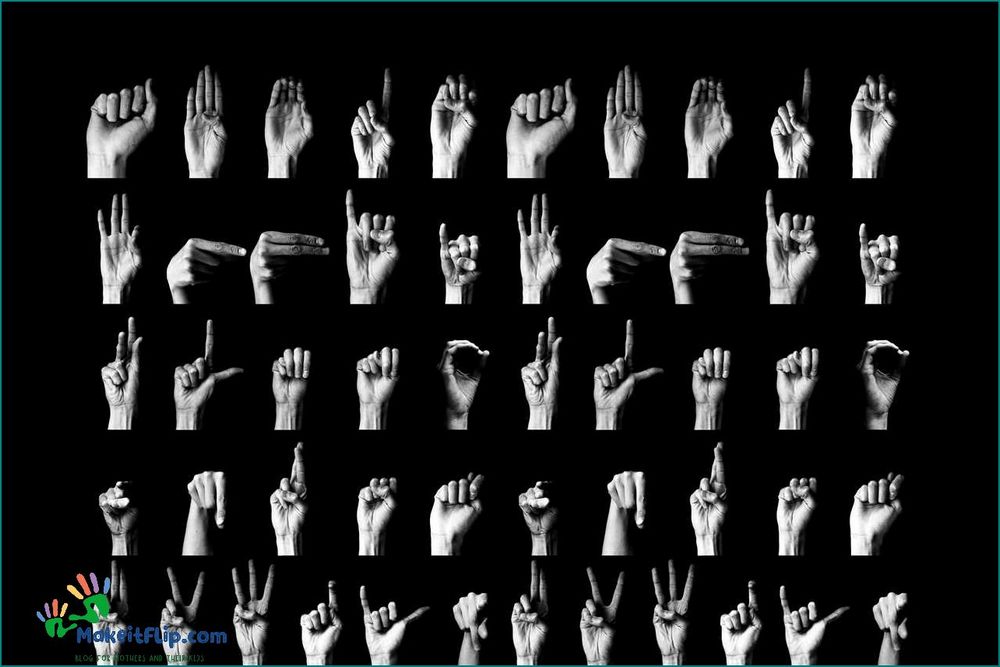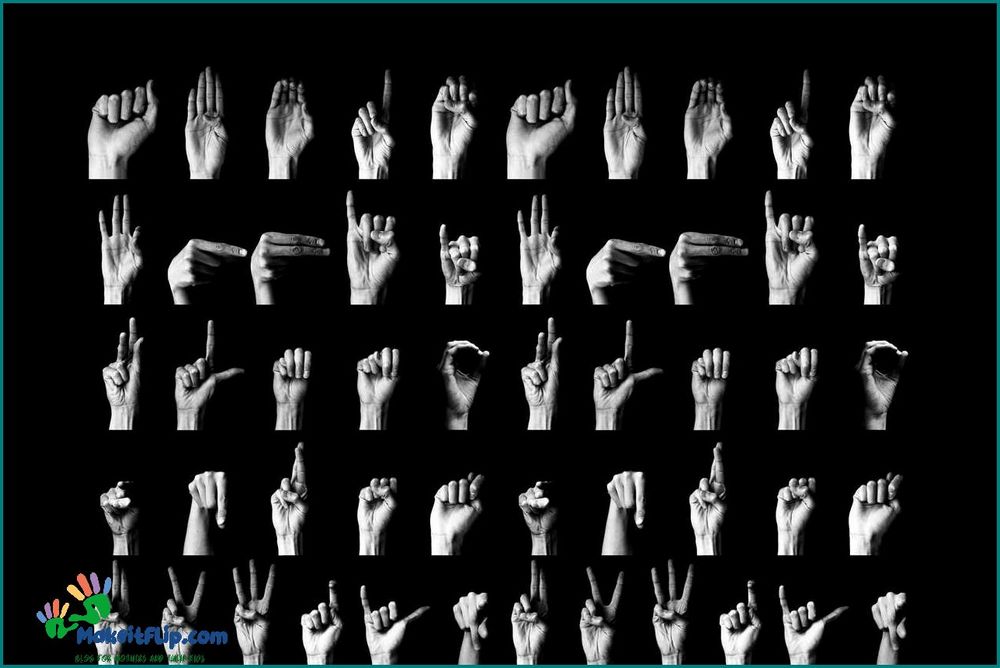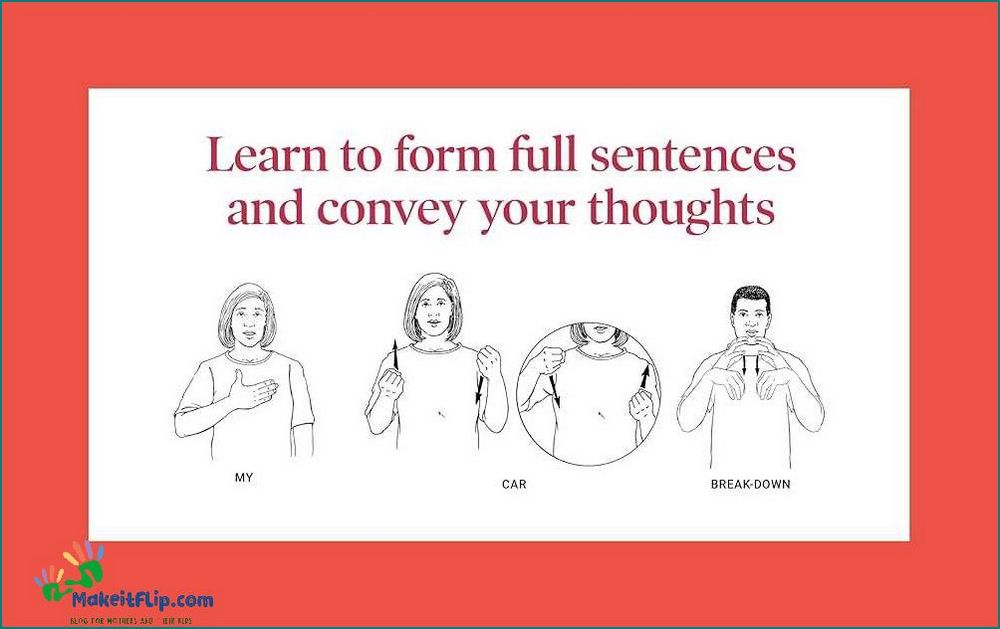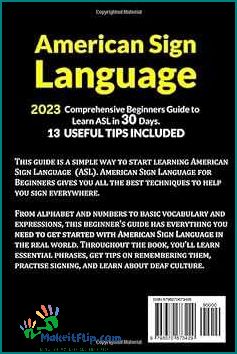Contents
- 1 Master American Sign Language ASL with our in-depth guide and tutorials
- 1.1 Why Learn American Sign Language?
- 1.2 Getting Started with ASL
- 1.3 FAQ about topic Learn American Sign Language ASL with our comprehensive guide
- 1.3.1 What is American Sign Language (ASL)?
- 1.3.2 Is American Sign Language the same as English?
- 1.3.3 How can I learn American Sign Language?
- 1.3.4 Are there different dialects or variations of American Sign Language?
- 1.3.5 Can American Sign Language be used internationally?
- 1.3.6 What is American Sign Language (ASL)?
- 1.3.7 Why should I learn American Sign Language?
- 1.3.8 Is American Sign Language difficult to learn?
Master American Sign Language ASL with our in-depth guide and tutorials

Are you interested in learning American Sign Language (ASL)? Look no further! Our comprehensive guide is here to teach you the basics and help you communicate with the Deaf community.
ASL is a visual language that uses hand gestures, facial expressions, and body movements to convey meaning. It is the primary language used by the Deaf community in the United States and parts of Canada. Learning ASL not only allows you to communicate with Deaf individuals, but it also opens up a new world of culture and community.
Our guide is designed for beginners and covers everything you need to know to get started with ASL. We’ll start with the alphabet and basic vocabulary, and then move on to more complex topics such as sentence structure and grammar. Each lesson is accompanied by video demonstrations and practice exercises to help you reinforce your learning.
Whether you’re learning ASL for personal or professional reasons, our comprehensive guide will provide you with the knowledge and skills you need to communicate effectively in ASL. So, what are you waiting for? Start your ASL journey today!
Why Learn American Sign Language?

Learning American Sign Language (ASL) is an invaluable skill that can open up a world of opportunities. Here are a few reasons why you should consider learning ASL:
- Communication: ASL is the primary language used by the Deaf community in the United States. By learning ASL, you can communicate with Deaf individuals and be a part of their community.
- Inclusion: Learning ASL shows your commitment to inclusivity and accessibility. It allows you to communicate with Deaf individuals on their terms and ensures that they are not excluded from conversations or activities.
- Career opportunities: Knowing ASL can open up a range of career opportunities. Many industries, such as education, healthcare, and social services, require professionals who can communicate effectively with Deaf individuals.
- Personal growth: Learning ASL can be a rewarding and enriching experience. It allows you to develop a new skill, broaden your horizons, and gain a deeper understanding of Deaf culture.
- Empathy and understanding: By learning ASL, you can develop a greater sense of empathy and understanding towards Deaf individuals. It helps break down barriers and promotes inclusivity in society.
Whether you want to communicate with Deaf friends or family members, pursue a career in a field that requires ASL, or simply broaden your horizons, learning American Sign Language is a valuable and worthwhile endeavor.
Communication for the Deaf Community

The Deaf community uses various methods of communication to interact with each other and the hearing world. American Sign Language (ASL) is one of the primary means of communication for the Deaf community. ASL is a visual-gestural language that uses handshapes, facial expressions, and body movements to convey meaning.
ASL is a distinct language with its own grammar and syntax. It is not simply a signed version of English. ASL has its own vocabulary and sentence structure, which may differ from spoken English. Learning ASL allows individuals to communicate effectively with members of the Deaf community and gain a deeper understanding of their culture.
In addition to ASL, other forms of communication used by the Deaf community include written communication, lipreading, and assistive technology. Written communication can be done through text messages, emails, or handwritten notes. Lipreading involves understanding speech by watching the movements of the speaker’s lips, facial expressions, and body language.
Assistive technology plays a crucial role in facilitating communication for the Deaf community. Devices such as videophones, text telephones (TTY), and video relay services (VRS) enable individuals to communicate over long distances through sign language or text. These technological advancements have greatly improved accessibility and inclusivity for the Deaf community.
It is important to note that not all individuals in the Deaf community use ASL as their primary means of communication. Some may prefer other sign languages, such as British Sign Language (BSL) or Australian Sign Language (Auslan). Additionally, there are individuals who use a combination of sign language and spoken language, known as Total Communication.
Overall, communication is essential for the Deaf community to connect with others and participate fully in society. ASL and other forms of communication provide avenues for expression, understanding, and connection for individuals who are Deaf or hard of hearing.
| Methods of Communication | Examples |
|---|---|
| American Sign Language (ASL) | Handshapes, facial expressions, and body movements |
| Written communication | Text messages, emails, handwritten notes |
| Lipreading | Understanding speech through lip movements and facial expressions |
| Assistive technology | Videophones, text telephones (TTY), video relay services (VRS) |
Expanding Career Opportunities

Learning American Sign Language (ASL) can open up a world of career opportunities. With the growing recognition of the importance of inclusivity and accessibility, the demand for ASL interpreters and professionals who are fluent in ASL is on the rise.
Here are some career paths that you can pursue with ASL skills:
- ASL Interpreter: As an ASL interpreter, you will bridge the communication gap between deaf and hearing individuals. You will work in various settings such as schools, hospitals, courtrooms, and conferences.
- ASL Teacher: With your knowledge of ASL, you can become an ASL teacher and help others learn this valuable language. You can work in schools, colleges, or even offer private tutoring.
- Deaf Education: If you are passionate about working with deaf individuals, you can pursue a career in deaf education. You can become a teacher, counselor, or administrator in schools for the deaf.
- Community Outreach: Many organizations and non-profits require individuals who can communicate with the deaf community. With ASL skills, you can work in community outreach programs, advocating for the rights and needs of the deaf community.
- Media and Entertainment: The media and entertainment industry is becoming more inclusive and actively seeking professionals who are fluent in ASL. You can work as an ASL consultant, actor, or even create content specifically designed for the deaf audience.
These are just a few examples of the career opportunities that await those who learn ASL. By acquiring this valuable skill, you can make a positive impact in the lives of deaf individuals and contribute to a more inclusive society.
Getting Started with ASL

Learning American Sign Language (ASL) is a valuable skill that can help you communicate with individuals who are deaf or hard of hearing. Whether you want to learn ASL for personal or professional reasons, this comprehensive guide will teach you the basics of ASL and help you become proficient in signing.
Why Learn ASL?
ASL is the primary language used by the deaf community in the United States. By learning ASL, you can bridge the communication gap and connect with deaf individuals on a deeper level. Additionally, knowing ASL can open up new career opportunities in fields such as education, interpreting, and social work.
Getting Started
Before you begin learning ASL, it’s important to familiarize yourself with the basics. Start by learning the ASL alphabet, which consists of handshapes that represent each letter of the English alphabet. Practice fingerspelling words and names to improve your dexterity and accuracy.
Tip: Use a mirror to observe your hand movements and ensure they are clear and accurate.
Next, focus on learning common ASL signs and phrases. Begin with simple greetings, such as “hello,” “goodbye,” and “thank you.” Practice signing these phrases until they become second nature.
Tip: Watch videos or take online courses to see how signs are performed by fluent signers.
Practice, Practice, Practice
Consistent practice is key to becoming fluent in ASL. Set aside dedicated time each day to practice signing. You can practice with a partner, join a local ASL club, or even record yourself signing and review your progress.
Tip: Don’t be afraid to make mistakes. Learning a new language takes time and effort.
Expand Your Vocabulary
As you become more comfortable with basic ASL signs and phrases, challenge yourself to learn new vocabulary. Start by learning signs related to your interests or profession. Use online resources, ASL dictionaries, and flashcards to expand your signing repertoire.
Tip: Practice using new signs in everyday conversations to reinforce your learning.
Immerse Yourself
To truly master ASL, immerse yourself in the language and culture of the deaf community. Attend ASL events, interact with deaf individuals, and seek out opportunities to practice your signing skills in real-life situations.
Tip: Join online forums or social media groups dedicated to ASL to connect with other learners and native signers.
By following these steps and dedicating yourself to learning ASL, you can become proficient in signing and open up a world of communication possibilities.
FAQ about topic Learn American Sign Language ASL with our comprehensive guide
What is American Sign Language (ASL)?
American Sign Language (ASL) is a complete, natural language that is used by the deaf community in the United States and parts of Canada. It has its own grammar and syntax, and uses hand movements, facial expressions, and body language to convey meaning.
Is American Sign Language the same as English?
No, American Sign Language (ASL) is not the same as English. ASL is a separate language with its own grammar and syntax. While some signs in ASL may have corresponding English words, the two languages are not directly interchangeable.
How can I learn American Sign Language?
There are several ways to learn American Sign Language (ASL). You can take classes at a local community college or language school, hire a private tutor, or use online resources and mobile apps. Practice and immersion in the deaf community can also greatly enhance your learning experience.
Are there different dialects or variations of American Sign Language?
Yes, there are regional variations and dialects of American Sign Language (ASL). Just like spoken languages, ASL can have different signs, vocabulary, and grammar depending on the region or community. It’s important to be aware of these variations when communicating with different signers.
Can American Sign Language be used internationally?
American Sign Language (ASL) is primarily used in the United States and parts of Canada. However, there are other sign languages used internationally, such as British Sign Language (BSL) and Australian Sign Language (Auslan). While there may be some similarities between these sign languages, they are not mutually intelligible.
What is American Sign Language (ASL)?
American Sign Language (ASL) is a complete, natural language that is used by the deaf community in the United States and parts of Canada. It is a visual language that uses hand gestures, facial expressions, and body movements to convey meaning.
Why should I learn American Sign Language?
Learning American Sign Language can open up new opportunities for communication and connection with the deaf community. It allows you to communicate with deaf individuals who may not be able to understand spoken language. Additionally, learning ASL can help you develop a deeper understanding and appreciation for deaf culture.
Is American Sign Language difficult to learn?
Learning any new language can be challenging, but with dedication and practice, it is definitely possible to learn American Sign Language. Like any language, it takes time and effort to become fluent, but the rewards of being able to communicate with the deaf community are well worth it.
I’m Diana Ricciardi, the author behind Makeitflip.com. My blog is a dedicated space for mothers and their kids, where I share valuable insights, tips, and information to make parenting a bit easier and more enjoyable.
From finding the best booster seat high chair for your child, understanding the connection between sciatica and hip pain, to exploring the benefits of pooping in relieving acid reflux, I cover a range of topics that are essential for every parent.
My goal is to provide you with practical advice and solutions that you can easily incorporate into your daily life, ensuring that you and your child have the best possible experience during these precious years.
